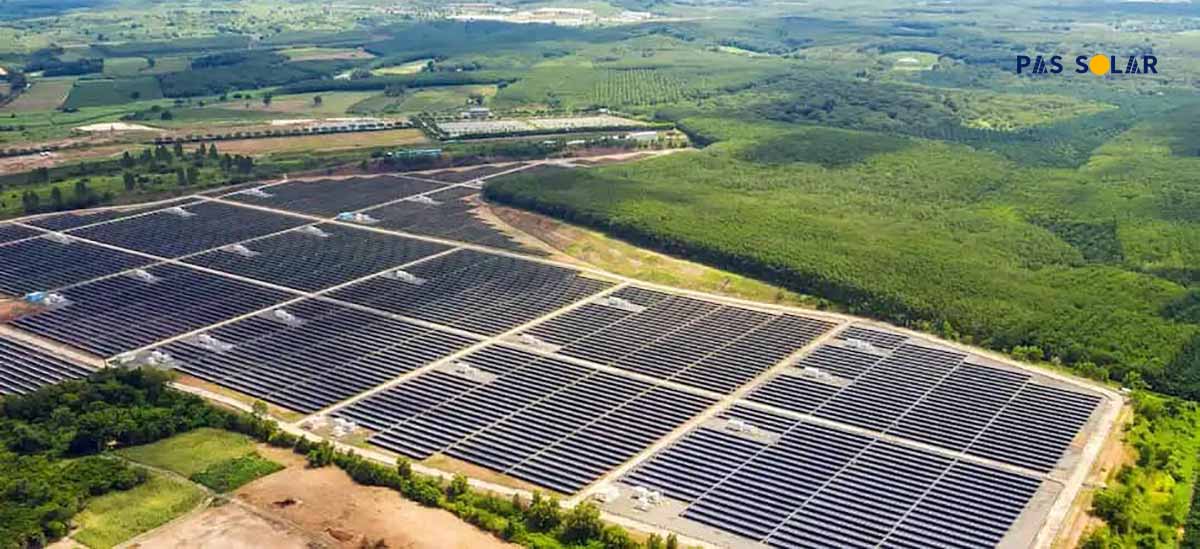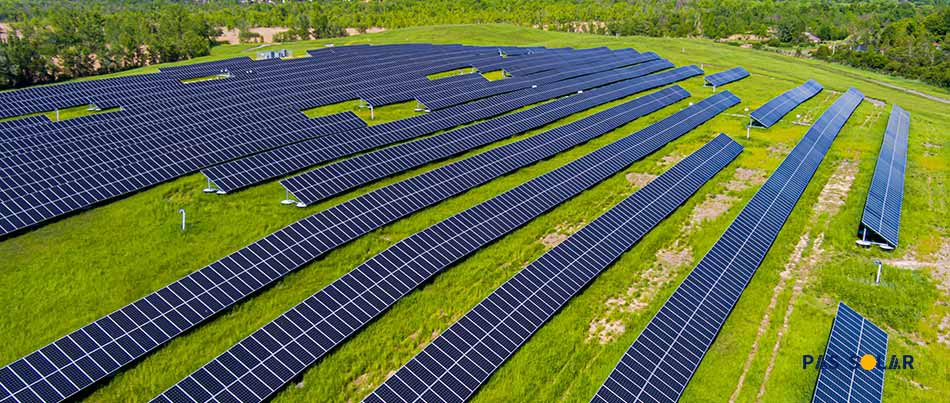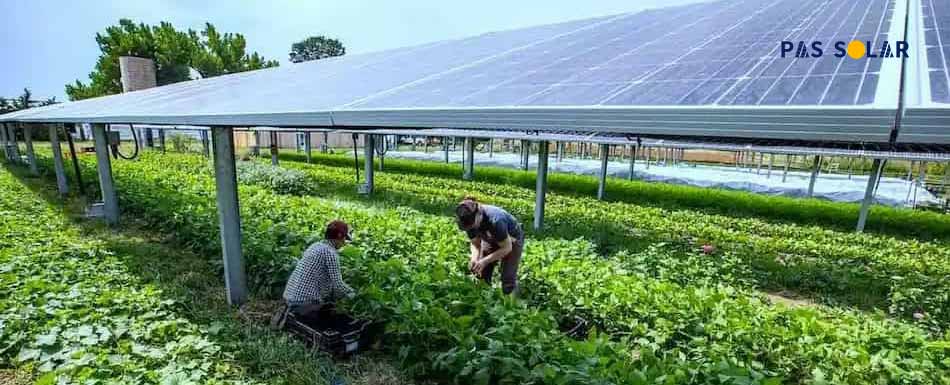The solar industry has experienced rapid growth over the past decade, and a major contributing factor has been the rise of solar farms around the world. In this article, we’ll explain the different types of solar farms, how much they cost, and how to build a solar farm.
What is a solar farm?
A solar farm, sometimes referred to as a solar garden or photovoltaic (PV) power station, is a large solar array that converts sunlight into energy that is then routed to the electrical grid. Many of these massive arrays are owned by utility companies and are another asset for the utility company to supply power to properties in their coverage area.
Building a solar farm can be a complicated process and may need a lot of skills, so we can not teach you how to build a solar farm step by step in one article, but you are going to understand the process much better.
A broader definition of solar farms could include other ground-mounted solar panels large enough to power many homes.
This general concept of a solar farm could be associated with residential community solar and community solar projects having a few hundred solar panels, and larger utility-scale solar having thousands of solar panels.
In some cases, community solar power can be a good alternative for households that cannot use a solar power option on their property. But it can be a great investment too, and it doesn’t have to be a large project. You just need to know how to build a solar farm.
Rooftop Solar vs. Solar Farms
Joining a community solar farm can be a great option if your roof is not suitable for solar power, or you don’t want solar panels installed on your property. Even if your roof is good for solar, signing up for a community solar project can still be worth it if the costs are low and the contract terms are beneficial.
As community solar projects become more common and contract terms become more consumer-friendly, solar farm options will compete even more with rooftop solar. However, if you learn how to build a solar farm, you’d know that each property has unique challenges and considerations, and there is no easy way to determine if you are the right candidate to join a solar farm and have found the best place to build a solar farm.
Take a look at our rooftop and community solar comparison for a more detailed look at how the two options stack up against each other.
Types of solar farms
There are two main types of solar farms across the country: large-scale solar farms and community solar farms. The main difference between the two is their customers and how to build a solar farm, as large-scale solar farms sell directly to utility companies, while community solar farms sell directly to energy consumers such as renters and homeowners.
Utility-scale solar vs. community solar farms
|
UTILITY-SCALE SOLAR FARMS |
COMMUNITY SOLAR FARMS |
| Sell electricity directly to utilities | Sell electricity to customers |
| A large operation for increased energy production. | Smaller in size compared to utility-scale farms. |
| The power produced here is either owned directly by a utility or sold wholesale to utility buyers via a PPA. The power produced here is either owned directly by a utility or sold wholesale to utility buyers via a PPA. |
Let customers buy a share of the farm and the energy generated from that farm. |
Community solar farms
The idea of community solar power has taken off in recent years as more homes have realized that they can go solar if they build a solar farm without needing to put solar panels on their physical roof. A community solar farm, often known as a “roofless solar” or “solar garden,” is a farm whose output is shared by more than one home.
In most cases, a community solar array is a large, ground-mounted installation that spans an acre or several, usually in a field somewhere.
Visually, these solar gardens resemble utility-scale solar farms but are often smaller in size, but that all depends on how to build the solar farm.
Customers can purchase a portion of a solar garden and own that portion of the total array, or they can lease power from the solar system and, in a sense, replace their monthly utility payments with monthly community solar payments that are generally priced higher Bass. You can find community solar projects in your city or state or your solar inverter suppliers in dubai.
Large scale solar farms
A large-scale solar farm (often referred to simply as a solar power plant) is a large solar farm consisting of many solar panels and owned by a utility that sends electricity to the grid. Depending on the geographic location of the facility, the power produced on these farms is either sold to wholesale utility buyers through a power purchase agreement (PPA) or is directly owned by an electric utility company.
Regardless of the exact structure, the original customer for solar power is a utility, which then distributes the generated electricity to grid-connected residential, commercial, and industrial customers. Solar farms don’t automatically save you money. You need to financially manage your farm and know how to make solar farm profitable.
Advantages and disadvantages of solar farms.
If you know how to build a solar farm, starting or signing up for a solar farm can be a great way to save money, reduce your carbon footprint, and make the most of rapidly changing solar technology. However, there are several things to consider before deciding to invest in one.
PROS
- Solar farms generate green energy
- Solar farms require little maintenance.
- No upfront cost for solar farms
CONS
- They have an initial cost for the owners.
- They require a lot of space
- The battery storage needed to harvest power can be expensive.
How much does a solar farm cost?
If you know how to build a solar farm and think that traditional rooftop solar isn’t right for you, signing up for a community solar farm might be a good option. There is no upfront cost to sign up, unlike the initial investment required to install solar panels like the Longi solar panels UAE. Once you’ve signed up, you can expect to save anywhere from 5 to 15 percent on your electricity bill.
Compared to residential solar panel setups, a solar farm is much cheaper to build on a dollar-per-watt basis between $0.80 and $1.30 per watt instead of the average cost of $2.76 per watt of a residential facility. Depending on the size of the installation, solar farm costs can range from $800,000 to over $1.3 million, significantly higher than the average cost of $20,474 for a residential installation.
However, utility-scale solar panel farms will typically be at least one megawatt (MW), which is a power plant capable of powering about 200 homes.
By this time you must know how to build a solar farm, but if you have questions and want them answered, or if you have any general questions about solar panel cost in UAE, you can contact us and get your answers.





